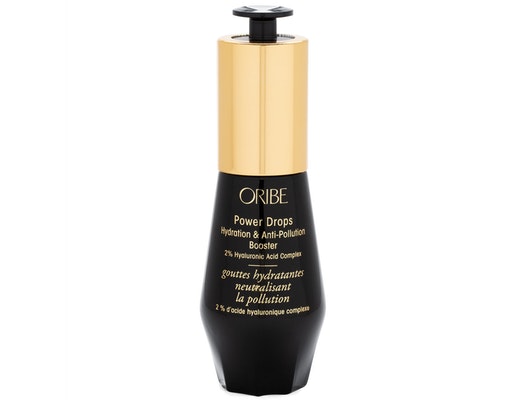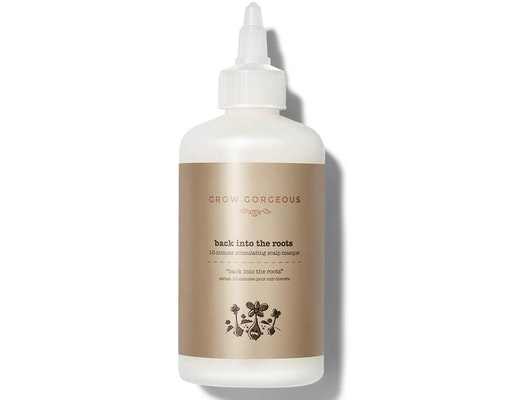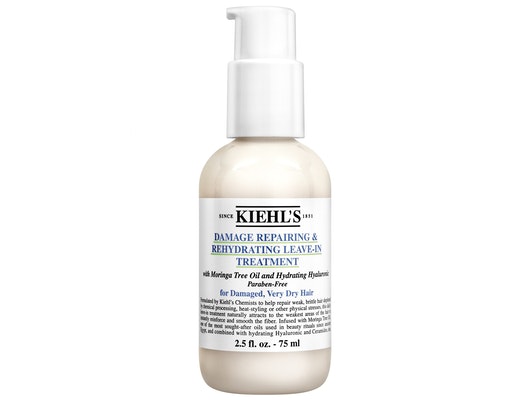Calling It! Hyaluronic Acid Is The Top Hair Care Ingredient Of 2019
[email protected] | July 25, 23
It’s easy to forget that our scalp — and ultimately, the hair sprouting from it — is an extension of the skin on our face. Many of the same ingredients that keep our skin plump and fresh can help our hair flourish. Most notably, hyaluronic acid (HA) — a hydrating skincare staple — has been cropping up in hair care products these days. And the benefits could be truly incredible for your strands.
To understand how HA can help your hair, let’s refresh: hyaluronic acid, which is naturally produced by our bodies, is one of the catalysts to keeping skin at its peak. “Its composition is that of a carbohydrate,” explains dermatologist Dr. Francesca Fusco. “I often refer to it as a moisture magnet.” More specifically, hyaluronic acid can hold up to 1,000 times its weight in water. It increases the hydration and moisture of almost anything it is placed on or in. Our bodies naturally produce hyaluronic acid: “It’s what helps keep our cells hydrated and skin elastic,” Fusco confirms, “but as with other things in our body that diminish with age, so do hyaluronic acid levels.”
So, What Can Hyaluronic Acid Do For Your Hair?
Well, let’s clarify: There isn’t any HA naturally found in actual strands. Rather, hyaluronic acid resides in the dermal layer of the scalp and plays a supportive role in nourishing the hair follicle as it grows, Fusco explains. “The hair shaft — the hair that is above the scalp — is mostly composed of keratin, a fibrous protein,” she says. But there is some water in the strand, albeit only a small amount.

Topical HA can help seal this small amount of water into the hair shaft. In the same way that topical HA seals hydration into the skin to give it a plumper appearance, hyaluronic acid can do the same for hair that is thin, flat, or damaged. Consider incorporating a booster formula into your hair care regimen for an extra hydrating oomph — the Oribe® Power Drops® Hydration & Anti-Pollution Booster ($58) acts like a skincare serum for your strands. Just add several drops to your favorite conditioner or other haircare formulas to amplify the moisturizing benefits, or simply directly to damp hair.

You can also help protect your scalp with topical HA as strong, lengthy strands are improved by a nourished scalp. When your scalp has plenty of HA, it helps support healthy hair growth. To ensure you’re delivering enough hydration to this important area, try a scalp treatment infused with the hydrating ingredient, like Grow Gorgeous® Back into the RootsTM ($28). This formula does double duty by nourishing a stressed scalp and stimulating limp strands, resulting in hair that looks healthier and more voluminous.
When Is The Best Time To Use HA On My Hair?
When you look back at the chemistry of how HA works — by acting like a “moisture magnet” — it makes sense that it’s best to use a hyaluronic acid hair product on wet (or at least damp) hair. But for an even bigger boost in benefits, seek out leave-in products, which stay on your strands to deliver hydration long after you’ve toweled off.
“It is far better to use HA in leave-in products,” agrees cosmetic chemist Ni’Kita Wilson. The beauty pro created a multi-purpose hair and body moisturizer laced with HA: the ReplenishTM Oil Crème for Hair & Body ($19), formulated with a blend of shea butter, coconut extract, and Abyssinian oil plus HA to deeply nourish dry skin and scalp. We’re also fans of OGX® Replenishing Water Drops 8-in-1 Mist ($9), which you spray directly on to damp hair post-wash to deliver detangling, nourishing, and smoothing benefits.
This brings up another benefit of hyaluronic acid — it plays nicely with other ingredients. You don’t have to worry about it not mixing well with your other hair styling or treatment products. That said, the order in which you layer is key. Fusco notes that you shouldn’t apply any oils to hair prior to an HA-infused product, because oils will prevent the HA from absorbing into the strand. Instead, use your favorite oil on top to seal it all in.
Does HA Work Well On All Hair Types And Textures?
When adding topical HA to your styling routine, it’s important to consider the porosity of your hair, which determines how much moisture your hair can soak up and hold onto. Low-porosity hair, which is typically smooth and/or silky, doesn’t absorb a lot of moisture (instead, added hydration typically sits on top). “Low-porosity hair will have less benefit from HA getting into the strand and promoting moisture from within,” explains Wilson. “However, it benefits just the same from surface hydration,” says Wilson.

On the flip side, high-porosity hair — usually coarse, rough, or damaged — acts like a sponge to soak in a ton of moisture. For this reason, it benefits most from HA-based hair care products. High-porosity strands will benefit from the Miriam Quevedo® Glacial White CaviarTM Hydra-Pure Timeless Beauty Creme ($60), which is loaded with HA as well as protective flower extracts, nourishing baobab oil, and encapsulated glacial water to protect against thermal damage. The formula is designed to sink deep into the hair shaft and deposit a significant amount of moisture-loving goodness while preventing frizz.

HA also has significant benefits for color-treated hair — particularly if you’ve experienced any breakage or fragility due to dyeing. “Damaged hair has a hard time holding onto water, so if HA can penetrate, then it helps the strands maintain moisture for a longer period of time,” Wilson explains. Try it in a mask or intensive treatment like Kiehl’s Since 1851® Damage Repairing & Rehydrating Leave-In Treatment ($25). By regularly incorporating hyaluronic acid into your hair routine, you should see healthier, more hydrated strands. After all, why let your skin get all of HA’s beauty benefits?
Some complimentary products were provided to the author for the purpose of writing this article.
Product prices may vary from the time this article was written.
Allergan® may receive commission for purchases made through links in this article.






